Posts Tagged ‘cement’
It’s a Texas vs EPA Cage Match. Winner Takes All …The Air You Breathe
 JOIN OUR TAG TEAM EFFORT TO TAKE DOWN THE STATE OF TEXAS
JOIN OUR TAG TEAM EFFORT TO TAKE DOWN THE STATE OF TEXAS
BUT WATCH OUT – THEY PLAY DIRTY
NEXT THURSDAY EVENING
JANUARY 21st
6:30 PM
616 Six Flags Road
First Floor HQ of the
North Central Texas Council of Governments
There's an important bureaucratic cage match between EPA and the State over how clean your air should be.
The state says just by hitching a ride on already-in-progress federal gasoline mix for cars and trucks, DFW ozone, or smog, will drop to levels "close enough" to the current federal smog standard of 75 parts per billion (approximately 78 ppb) . No new cuts in pollution required.
The EPA says not so fast – "close enough" may not be good enough this time around and you're not following the Clean Air Act in laying back and requiring no new cuts in pollution.
EPA has told Austin a failure to follow Clean Air Act rules will force it to take responsibility for the plan away from the State.
Is this something you want? If so, you should show up and next Thursday evening to give the EPA the political support it needs to pull the rug out from under the State.
WHAT HAS THE EPA ALREADY SAID ABOUT THE STATE'S PLAN?
Along with comments from DFW residents, environmental groups, doctors, industry and elected officials, EPA itself will weigh-in with written comments on the TCEQ plan by the deadline of January 29th.
But we don't have to wait that long to find out what EPA really thinks about what the State is proposing. Last year, EPA provided 11 pages of comments on exactly the same plan.
1) This plan won't work without more cuts in pollution
What EPA Said:
"Based on the monitoring data and lack of additional large reductions in NOx within areas of Texas that impact DFW, it is difficult to see how the area would reach attainment in 2018 based solely on federal measures reductions from mobile and non-road….The recent court decision that indicates the attainment year will likely be 2017 for moderate classification areas such as DFW, makes it less clear that the area will attain the standard by 2017 without additional reductions."
What EPA Meant:
It wasn't looking good when the deadline for reaching the 75 ppb standard was 2018 and the State didn't require any new cuts in air pollution, but now that the deadline is 2017, your do-nothing "close enough" plan is even less likely to work.
2) Your case for doing nothing isn't very good
What EPA Said:
"While the State has provided a large chapter on Weight of Evidence, the principal evidence is the recent monitor data. The monitor data does not show the large drops in local ozone levels and therefore raises a fundamental question whether the photochemical modeling is working as an accurate tool for assessing attainment in 2018 for DFW."
What EPA Meant:
Actual measurements of smog in DFW seem to undercut your claim that the air is getting cleaner faster. Maybe your computer model that's driving the entire plan isn't all that great. (And this was before smog levels went UP after the summer of 2015 – something not predicted by the State's model….)
3) Review pollution limits for the Midlothian cement kilns, or we'll reject your plan
What EPA Said:
"Because of significant changes in the type and number of cement kilns in Ellis County,…TCEQ's rules need to be reevaluated to insure these reductions are maintained, and the emission limits reflect a Reasonably Available Control Technology (RACT) level of control as required by the Clean Air Act…Failure to conduct a thorough RACT analysis for cement kilns which would include appropriate emission limits would prevent us from approving the RACT portion of the attainment plan submittal."
What EPA Meant:
Update your kiln pollution limits, or this part of the plan is toast. (Texas chose not to perform this update, in essence, giving EPA the bureaucratic finger.)
4) Oil and Gas pollution seems to be keeping the region's smog levels higher than they should be
What EPA Said:
"Recent NOx trends (Figure 5-10 in TCEQ's Proposal) indicate a fairly flat NOx trend for several NO monitors in the western area of the DFW area (Eagle Mtn. Lake, Denton, and Parker County monitors). These monitors are in areas more impacted by the growth in NOx sources for Oil and Gas Development that seem to be countering the normal reduction in NOx levels seen at other monitors due to fleet turnover reductions (on-road and Nonroad). These higher NOx levels in the modeling domain that seem to be fairly flat with no change since 2009
raise concern that the area is not seeing the NOx reductions needed to bring the ozone levels down at these monitors."
What EPA Meant:
Since the historically worst-performing air pollution monitors in DFW are located in exactly the same area as a lot of gas and oil activity, and these monitors haven't been seeing the expected decrease in smog you predict, maybe you ought to think about cutting pollution from those oil and gas sources. Like we said, this plan needs more cuts in pollution.
5) Your own evidence supports cuts in pollution from the East Texas Coal Plants
What EPA Said:
"The TCEQ provided an evaluation of emissions from all of the utility electric generators in east and central Texas. However, the discussion in Appendix D on the formation, background levels, and transport of ozone strongly supports the implementation of controls on NOx sources located to the east and southeast of the DFW nonattainment area. How would a reduction in NOx emissions from utility electric generators in just the counties closest to the eastern and southern boundaries of the DFW area impact the DFW area?"
What EPA Meant:
Despite your protests, the State's own analysis shows cuts in pollution from the East Texas Coal Plants have a big impact on DFW smog levels and supports the argument for putting new controls on them. Did you actually run your fancy-dancy computer model to see what would happen if you did that? (No, the State did not. But UNT and Downwinders did.)
WHY WOULD AN EPA PLAN FOR DFW AIR MAKE ANY DIFFERENCE?

If the EPA rejects the State's plan, the clock begins ticking: the State is warned it has to write a new plan and, meanwhile, EPA begins to write its own. If the State doesn't turn in a plan the EPA finds acceptable in 24 months, the EPA plan is implemented instead.
The State has no interest in any new cuts of pollution from any sources. It thinks it's plan is already "close enough."
If the EPA is writing the plan, citizens can use the new UNT study to show the Agency which cuts get the largest drops in smog – using the State's own air model.
We can use Dr.Haley's study to show the approximate economic and public health benefits of those cuts.
More change happens if EPA is writing the plan.Enough to finally get DFW safe and legal air? We don't know until we try. The alternative is doing nothing.
US Cement Plant Using SCR Pollution Control Device Achieves 80% Reduction. Texas Says It’s Still Not Feasible.
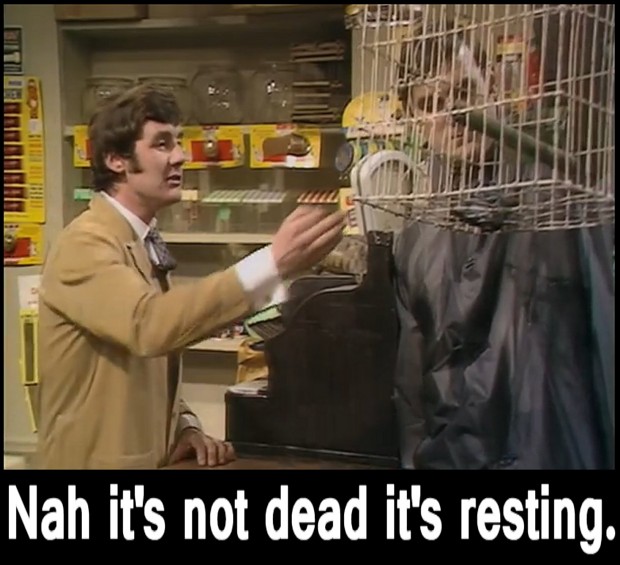 EPA has released the results of the first test of a full-scale Selective Catalytic Reduction (SCR) unit on a US cement plant and the numbers look good.
EPA has released the results of the first test of a full-scale Selective Catalytic Reduction (SCR) unit on a US cement plant and the numbers look good.
As many of you know, SCR is just an industrial-sized version of the catalytic converter in your car. It can capture up to 90% or more of the smog-forming pollution from a cement plant. In use on cement kilns since 2001, there are at least a half a dozen cement plants in Europe that use SCR successfully, but the technology has been slow to arrive in the US because of regulatory laziness and industry resistance.
But after 15 years, that's finally changing.
in 2013, LaFarge Cement entered into a consent decree with the EPA and the US Justice Department as part of a settlement over a string of environmental violations, including excessive smog-forming Nitrogen Oxide (NOX) emissions. As part of that settlement, Lafarge was to retrofit its Joppa, Illinois "dry process" cement kiln with an SCR unit, record its effectiveness during stack testing, and report on the results of those tests by 2015.
This last week, those results were finally made available by EPA and they show SCR was able to reduce NOx by 80%.
That's approximately twice as effective as SNCR technology, (Selective NON-Catalytic Reduction), the current pollution control device for NOx most often used in U.S. cement plants.
Moreover, according to LaFarge, "the SCR control technology performed well and no operational problem was encountered."
In fact, the control technology worked so well, LaFarge is now getting a permit from the Illinois state environmental agency to operate SCR past the EPA-mandated settlement period.
But while LaFarge is getting its SCR permit, Holcim's Midlothian cement plant has already applied and been granted one by the Texas Commission on Environmental Quality for construction and operation of its own SCR unit. It should be up and running by this time next year.
So that makes two U.S. cement plants with permits to run full-scale SCR units. One that was forced into the choice by EPA and now wants to keep using it, and another voluntarily adding it.
But according to the TCEQ, even though it gave a permit to Holcim to install SCR, and even though Holcim's SCR unit will be operational in a year, and even though the LaFarge test was a success, and even though SCR has been used for 15 years by European cement companies – SCR is "not economically or technically feasible." That's exactly what the Commission said in response to comments from both citizens and the EPA in its new clean air plan for DFW a couple of months ago.
That's right. One the one hand the Commission has granted a permit to Holcim to build an SCR unit in its own backyard, and on the other it's still calling the technology infeasible. It's the stuff of Monty Python sketches.
And that's not all. There is no mention of the Holcim Cement SCR permit in the TCEQ's own official arguments against SCR in its DFW clean air plan. Not one. Since Holcim's building of an SCR unit would tend to empirically disprove TCEQ's contention that the technology wasn't practical, the state just pretends it's not happening. As with climate change and smog, any facts that conflict with the pre-determined ideologically-correct premise must be ignored.
Presumably, Holcim is building the SCR unit because it's made the business judgment that the technology is not only both economically and technologically feasible, but beneficial to the company's bottom line. Presumably LaFarge is pursuing a permit for its SCR unit because it has made the same practical decision. Yet, in a strange role reversal, a Texas state government agency is now telling business it's making the wrong choices. It's overruling the industry's decision to reduce pollution through SCR use by saying "not so fast."
This is how bad its gotten: the Texas approach to clean air is now so backwards that the cement industry is more aggressive about reducing pollution than Austin.
So how many U.S. cement plants have to be operating with SCR before the State of Texas concludes it's a feasible technology? Two? Four? A Dozen?
Fortunately, the TCEQ isn't the last word on this. The Clean Air Act says any and all reasonably available technology must be used on major pollution sources like the Midlothian cement plants when a clean air plan is being drafted. TCEQ hasn't done that. We think they're breaking the law. There are signs that EPA thinks so as well.
EPA is ultimately in charge of enforcing the Clean Air Act, and if it doesn't do it correctly, then the courts step in.
The best hope for safe and legal air in DFW is for EPA to rigorously enforce the law. The State of Texas will not do so. If you agree then please take a minute to:
1) sign this petition to EPA
2) Send this e-mail to EPA
Thanks.
Why DFW Residents Should Speak in Favor of a Lower Smog Standard at Thursday’s EPA Public Hearing in Arlington

All Day NATIONAL Public Hearing on a New Federal Ozone Standard
Thursday, January 29th, 9am to 7:30 pm
Arlington City Hall, 101 W. Abram
There are only three national public hearings on the possibility of lowering the national federal ozone, or smog, standard. One is in Washington DC, another is in Sacramento, California and the third is right here in Arlington, Texas. We need everyone that can come and speak for 5 minutes on the importance of cleaner air to do so. You know industry and elected officials hostile to the EPA and the Clean AIr Act will be well-represented
To secure your 5-minute speaking slot, e-mail Eloise Shepard and ask for one in the time period during the day on Thursday most convenient for you. Please do it asap: shepherd.eloise@epa.gov.
There are at least two very good reasons why North Texas residents should support a new lower smog standard of 60 parts per billion – the lowest standard under consideration by the EPA.
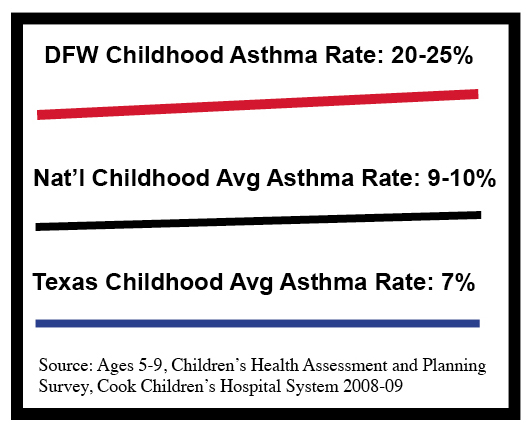 1. DFW has Epidemic Childhood Asthma Rates
1. DFW has Epidemic Childhood Asthma Rates
According to a first-of-its kind survey in 2008 by Cook Children’s Hospital, one out of every four DFW children ages 5-9 suffered from asthma. That was more than twice the national average, and more than three times the average for the state of Texas. Asthma is the most common cause of missed school days and is one of most common causes of Emergency Room visits and hospitalizations.
The DFW Hospital Council estimates nearly 1500 children in Dallas County visited an emergency room or were admitted to a hospital due to asthma in 2012. Dallas County has the highest number of child asthma hospitalization in the state.
According to EPA itself, a new 60 parts per billion (ppb) standard for ozone would eliminate roughly 1.8 million asthma attacks, 1.9 million missed school days, and 6,400 premature deaths nationwide – 95% of all ozone-related deaths. Few regions would benefit more from such a lower ozone standard than DFW.
2. It’s One of the Few Ways to Force Reductions in Harmful Air Pollution in Texas 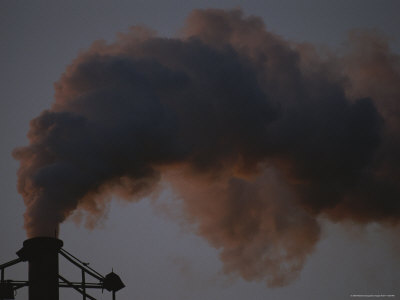
Texas is a place where industry rides rough shod over state regulators and citizens don’t have a level playing field to seek relief from the adverse health consequences of air pollution. Tougher federal ozone standards are one of the only ways to reduce air pollution from large local sources like the cement kilns in Midlothian, gas facilities in the Barnett Shale, and coal plants in East Texas.
Lower federal ozone standards over the last two decades, combined with grassroots campaigns have resulted in the lower volumes of smog pollution from the Midlothian cement kilns, plus reductions in other kinds of harmful pollution from the kilns as well, like particulate matter, and carcinogens. A new 60 ppb ozone standard would mean the kilns would have to add state-of-the-art controls to bring down those totals even more – to as much as 90% reductions. The same is true with the East Texas coal plants and with polluting gas facilities. To get down to 60 ppb ozone levels in DFW could mean deep cuts from the largest sources of industrial air pollution in North Texas. Something that probably won’t happen without a new, lower federal ozone standard.
And that won't happen without a lot of you showing up on Thursday to say you want and need cleaner air to breathe. Reserve your 5-minute speaking slot now. It's a good investment if you live in Texas.
Another Chapter of “Why Don’t We See This in Midlothian?”
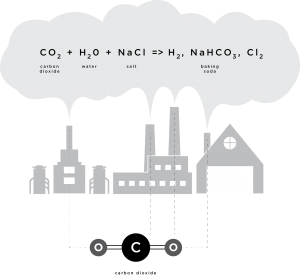 Cement plants are among the world's largest sources of CO2. In order to reduce their carbon footprints, either voluntarily or to comply with new environmental regulations, as well as make a buck, owners are trying out different strategies to turn their Greenhouse Gases into just plain green cash.
Cement plants are among the world's largest sources of CO2. In order to reduce their carbon footprints, either voluntarily or to comply with new environmental regulations, as well as make a buck, owners are trying out different strategies to turn their Greenhouse Gases into just plain green cash.
As far as we can tell, the "SkyMine" pilot-project announced for San Antonio's Capital Aggregates Cement Plant is still on schedule for operation later this year. Employing 50 people, the first-of-its-kind facility will convert the cement plant's carbon dioxide into baking soda and hydrochloric acid that's aimed at oil and gas field use.
Now comes word that a LaFarge Cement Plant in Canada is hooking up with a fuel cell company to make a slightly more progressive product from its GHGs:
"Mantra Energy Alternatives has struck a deal with Lafarge Canada to deploy an electrochemical reduction technology at Lafarge’s No. 9 Road cement plant.
“This will be the first pilot plant of its kind in the world,” said Mantra’s vice-president Patrick Dodd in a press release.
On paper, the technology would convert carbon dioxide, considered the most prolific greenhouse gas, into useful chemicals like formic acid and formate salts. The pilot plant would convert 100 kilograms per day of carbon dioxide emitted from the local cement plant into concentrated formate salts, which sell for about $1,500 per tonne.
Mantra is eying the formic acid for use in its patented fuel cells, which it bills as a significantly less expensive fuel cell with greater power density."
Granted, the manufacturing of oil and gas chemicals sounds more likely for one of the three huge Midlothian cement plants to attempt than diving into the alternative energy business, but at least it's something. The end products can change and adapt but these projects begin to put the infrastructure of a supply and demand system in place while seeing potentially large decreases in CO2 output. In 2014 America, the fastest way to get reductions in GHGs is to make it profitable to do so. These experiments pave the way for that to happen.
There's no question that the TX/ Martin-Marietta, Holcim and Ash Grove cement plants are the largest stationary sources of CO2 in North Texas, or that together, they form a huge GHG hotspot. All the old coal-fired power plants that would have challenged them have been shuddered or converted to gas.
While (forced) modernization at all three plants like the conversion from wet to dry kiln technology has brought all emission totals down, particularly CO2, the fact remains that the huge scale of operations in Midlothian means there's no other facilities that churn it out as much. And yet not one creative idea for how to reduce those huge local emissions has been announced from any of those companies. You can't just use the Texas excuse because the San Antonio experiment is happening despite no immediate government mandate, especially on existing facilities. And you might think that the first company to do so would receive some needed good PR. But nope.
This has been another chapter of "Why Don't We See This in Midlothian?"
End of an Era: TXI Cement Sold To Martin-Marietta
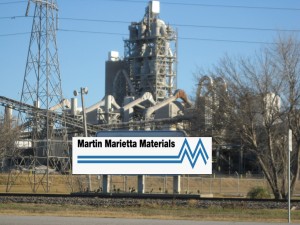 In a $2 billion deal, Raleigh, North Carolina-based aggregate and crushed stone manufacturer Martin Marietta Materials (a separate spin-off on the more well-know aerospace conglomerate) bought Dallas' own TXI Cement, which opened its first cement kiln in Midlothian in 1960.
In a $2 billion deal, Raleigh, North Carolina-based aggregate and crushed stone manufacturer Martin Marietta Materials (a separate spin-off on the more well-know aerospace conglomerate) bought Dallas' own TXI Cement, which opened its first cement kiln in Midlothian in 1960.
This year, that kiln, along with the three other obsolete wet kilns at TXI's Midltohian plant that burned hazardous waste for two decades, is due to be demolished, following the company's corporate demise at the hands of the grandson of its founder. And then, the last remnants of the old TXI will be gone for good.
What does the change in ownership mean for breathers in North Texas?
Martin Marietta has owned and operated cement plants around the US in the past, but they'd divested themselves of these prior to 2014. As of now, the TXI cement plants in Texas and California are apparently the only ones the company owns. There's some speculation that Martin-Marietta bought TXI for its aggregate, stone, and concrete facilities in Texas and California, and will soon seek a buyer for the cement plants it inherited, but doesn't really want.
If that's true, the new owners will act as placeholders of the status quo, not investing in big new capital projects, but also trying not to lose any of the value of the assets they now have by running them into the ground. Martin probably won't look favorably upon attempts to bring smog-reducing modern Selective Catalytic Reduction (SCR) technology to TXI via the next clean air plant for DFW, now due in June of 2015. Not only would the plant be among the first to adopt the technology in the US, (even though SCR has been successfully used in European cement kilns for over a decade now), but it would mean new capital investment and a new learning curve.
Swiss-based Holcim Cement, with a huge plant already in Midlothian and a large manufacturing footprint in the US, was rumored to be one of TXI's suitors before the sale was announced. It could be that Holcim, or another well-established player in the cement industry winds up with the actual kilns in the next year. That could complicate the plant's participation in the new clean air in other ways even if new owners are not as intimidated by the demand for new technology
Politically, it'll be interesting to see which Austin lawyers and lobbyists get the business of the new company. Martin-Marietta owns over 40 facilities in Texas already and is represented by it's own crew. Will TXI's law firm and lobbyists survive the buy-out? There are industry lobbyists that will keep the ball rolling no matter what – the Chemical Council, the Aggregate Association, etc. But in Austin, it's all about relationships, and it's hard to say yet how this Martin's buying of TXI changes any of them.
Maybe the place TXI's absence will be felt the most in in the corridors of power in DFW. TXI was proudly headquartered in Dallas. Ralph Rogers, TXI's founder and patriarch was a driving force in local philanthropy, giving millions to public broadcasting (KERA is housed is housed in the "Ralph Rogers Communications Center") and other non-profits. Besides feeing like he was entitled to use PBS's iconic Big Bird to sell the benefits of burning hazardous waste in 50-year-old cement kilns, the non-profit giving Rogers was responsible for made him a known figure on the Dallas Charitable circuit. In turn, this made it hard for the Powers That Be to criticize Roger's company when it became a waste incinerator.
Locally, the establishment played golf with the Rogers' or attended black tie dinners with them, or helped them lift the oversized scissors at ribbon-cutting ceremonies. But that was old Dallas. Hardly of those relationships survived past Ralph Rogers' death in 1997. His son, Robert, failed to maintain that same high-profile locally, and his grandson Jamie seems totally disinterested in the family business or its legacy of charitable giving.
Now, the move of company headquarters from Dallas to Raleigh will complete the disappearance of the once-mighty TXI on the local scene. They'll still be company representatives at functions, but it won't be the guy who can write the big checks, or who the Mayor had a splendid time with last Saturday at the Club.
The company's local political influence has forever been diminished, and that's a good thing for citizens who are fighting the company to get modern controls like SCR. Now, it's just one more corporate entity with a presence in North Texas. A presence that makes it the single largest air polluter in the region. That's the way Dallas and other downwind cities should have viewed the company all along.
EPA Staffer Who Oversaw Cement Plant Rule Gutting Will Be Your Next Administrator
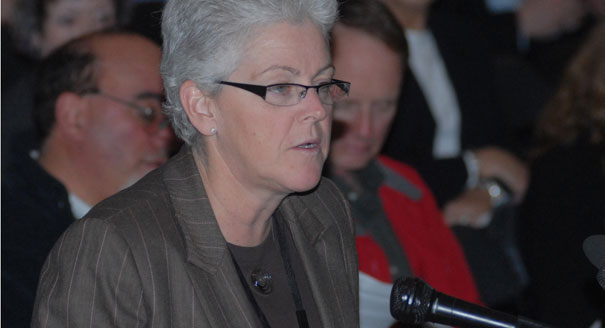 According to a number of different Washington-DC based news outlets, President Obama has picked current EPA Director of Air and Radiation, Gina McCarthy, as his choice to head up the entire Agency for his second term.
According to a number of different Washington-DC based news outlets, President Obama has picked current EPA Director of Air and Radiation, Gina McCarthy, as his choice to head up the entire Agency for his second term.
McCarthy was the EPA staffer in charge of explaining to citizens why new cement plant emission rules the Agency and the President had already signed-off on in 2010 were gutted last year just prior to adoption, despite unanimous citizen opposition to the changes at a national hearing at Arlington City Hall last August. Instead of a 2013 compliance deadline, the industry now has until 2015. And real time particulate matter monitoring was tossed in favor of a using a formula every so often.
McCarthy's paraphrased explanation: "These new rules are gonna make kilns ever more awesome!"
In a meeting last year with kiln activists, she couldn't explain why the rule was being changed, who wanted it changed, or where the order to change it came from. It was a mystery even to the most cynical DC-based environmentalists. And now she's in charge of the whole show.
Some are interpreting McCarthy's promotion as a first step in the Administration taking executive action on climate change, since she headed up some recent initiatives on that front.
A Boston native, McCarthy came to Washington after serving as the top environmental regulator in Massachusetts and Connecticut under Democratic and Republican governors.
Former Massachusetts Governor Michael Dukakis, a Democrat, appointed her chair of a council to oversee a review of a proposed hazardous waste incinerator in the Boston area in 1990.
She later served as an environmental policy adviser to then-Massachusetts Governor Mitt Romney and launched the state's first Climate Protection Action Plan. Romney was Obama's Republican opponent in the 2012 presidential election.
In 2004, McCarthy was appointed to head Connecticut's Department of Environmental Protection under then-Governor Jodi Rell, also a Republican, and helped lead the state into a carbon cap-and-trade system for Northeastern states, known as the Regional Greenhouse Gas Initiative.
Another Waste Fire at a Waste Burning Cement Plant
Indian downwinders complain of air pollution from their local cement kiln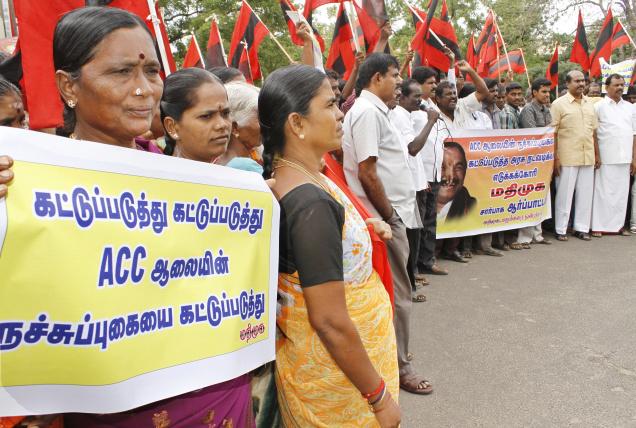
This time in India instead of Utah or South Carolina.
In Coimbatore, plastic and leather wastes stockpiled waiting to be burned as "fuel" at the Madukkarai cement works spontaneously combusted in a three hour fire that did not result in any known injuries at the plant.
However, thick columns of black smoke poured into the sky and that stuff, as the late Dr. Commoner would note, has to go somewhere. A lot of it will no doubt dind its way into the lungs of downwind residents. More than 200 tons of waste was gutted in the fire out of at total twice as large.
Despite local fire officials urging the cement plant to enclose the waste for some time, it had not done so. That is an apparent violation of state law. And readers, will it surprise you in the least to learn that the plant was already a longtime source of complaints from local residents?
Meanwhile the Fire and Rescue Services Department officials pointed out that storing combustible waste materials outside the plant without adequate protection was in violation of the Tamil Nadu fire service rule of 1990.
"It is a violation of section 250 of Tamil Nadu Fire Service Rules 1990 and we will issue a notice to the factory and will give them 15 days to store the waste materials inside a roofed structure with protective walls," said Subramanian.
Residents have been protesting against the cement factory for a long time and have submitted numerous petitions to the district administration. They claimed that the dust and smoke from the factory was causing major health complications, especially for senior citizens and children.
"We have raised the issue on numerous occasions and also submitted petitions to the district administration but till now no action has been taken," said C Palaniswamy, a resident of Kurumbapalayam.
There is a premeditated and orchestrated campaign by the cement industry to allow kilns to become garbage burners of all kinds of wastes. We've seen it manifest itself locally in Midlothian with the TXI permit that allows that plant to burn car parts and plastic wastes.
The more kilns that become gargabe burners, the more garbage of dubious content will pile up at kilns, the more often that garbage causes a fire. We've reported on three just since the summer alone. Being downind of an uncontrolled garbage fire isn't one of the talking points the industry boasts about when it's trying to sell kilns as the industrial equivalent of Kitchen disposals, but it's looking more like a standard feature rather than an option.
Another Chapter of Cement Kilns As Garbage Incinerators
 One of the reasons it's so disheartening to have EPA rollback the deadline for new cement plant air toxics standards and gut the PM pollution provision of those standards is because of the large and fundamental shift in what's being burned is taking place within the industry. Downwinders across the country need the protection of these new rules as soon as possible, as everything, including the kitchen sink, is being thrown into kilns.
One of the reasons it's so disheartening to have EPA rollback the deadline for new cement plant air toxics standards and gut the PM pollution provision of those standards is because of the large and fundamental shift in what's being burned is taking place within the industry. Downwinders across the country need the protection of these new rules as soon as possible, as everything, including the kitchen sink, is being thrown into kilns.
There's a determined effort underway nationwide for cement plants to secure new permits or permit "amendments" or "modifications" to burn increasing amounts of municipal and industrial garbage, including lots and lots of plastics. With new regulation of hazardous waste burning in the US taking some of the fun and profit away from that practice, the trend is now headed toward burning all kinds of "solid waste" including hard to recycle bits of municipal and industrial garbage like plastics and car "fluff" – all the non-steel parts of a car or truck, including dashboard, electronics, interiors, brake linings, etc.
Locally, TXI's 2011 permit amendment – given without public notice or opportunity for comment – is the worst example of this national trend, although Holcim and Ash Grove are also burning tires, used oils, and other kinds of industrial waste already.
Now word comes of the CEMEX plant in Louisville also making plans to burn plastics and other kinds of garbage, but
"…industrial pollution has been an issue in southwest Louisville for decades. The plant is near the coal-fired Mill Creek power plant, and residents have long complained about dust and soot from both.
Denise Allgood, vice chairwoman of the Valley Village Homeowners Association, said she was not familiar with the proposal and said any change involving air pollution is likely to be sensitive.
The (pollution) that’s coming out of that place now is of great concern,” she said. “We’ve been told by the powers that be that’s it’s better than it has ever been, but I would hope that whatever (CEMEX) is considering, they are also considering the health and welfare of the people in this area.”
What could make the problem wortse? Burning plastics that release exotic new chemicals that can hitch a ride on all that old soot and dust. We're entering a whole new era of contamination by incineration once plastics-burning becomes widespread in the nation's cement kilns. That's a big reason why we need the added protection of the EPA rules.
